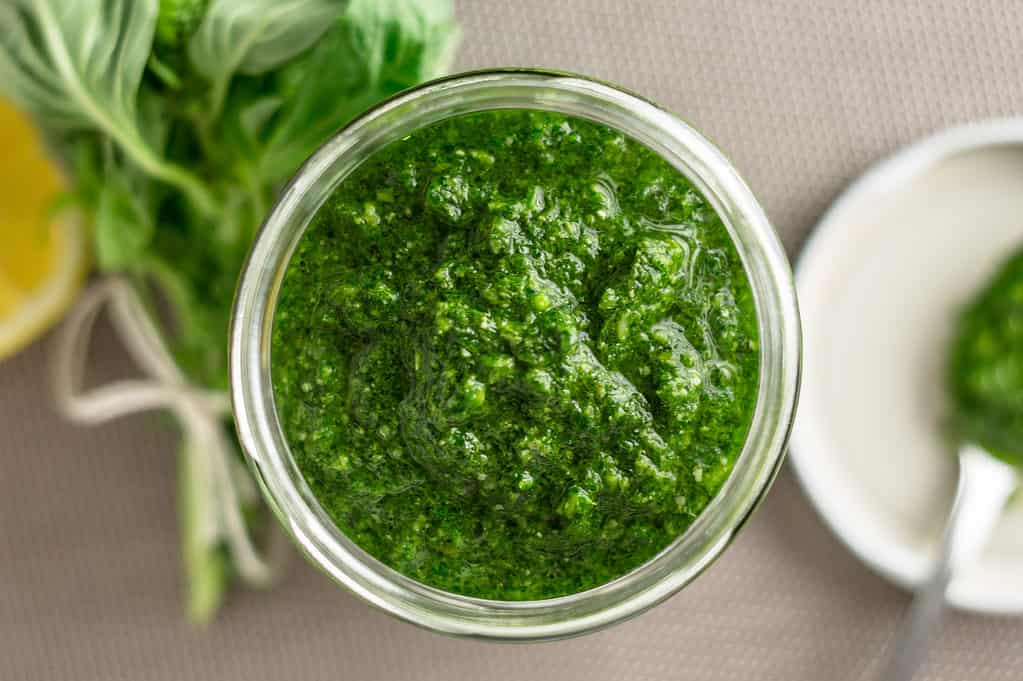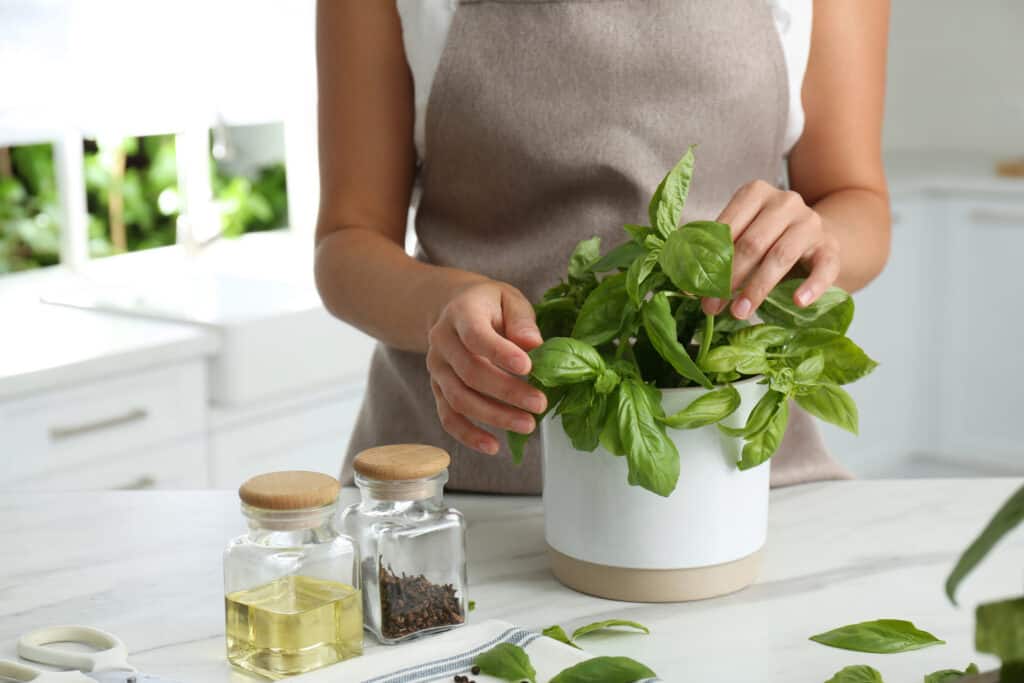Basil is an easy-to-grow, delicious herb found in many cuisines throughout the world. Not only is basil versatile and can complement almost any recipe, whether sweet or savory, but it is also easy to grow.
Basil is an indoor-outdoor plant that can handle a wide range of temperatures and conditions, so if you live in an apartment or don’t have a big garden, you can still grow basil with ease. Plus, it’s super cute, especially when it grows up a trellis or wall.
There’s nothing quite like fresh-picked basil straight out of the garden. But how do you grow basil? Let’s dig in!
Why You Should Grow Basil
There are over 60 varieties of basil (Ocimum basilicum), but the most common to grow is sweet basil. It has a distinct smell that’s easy to recognize and tastes even better. You can use it fresh or dried, in pesto, or as garnish for your dishes.
Apart from the aroma and cooking uses, there are amazing health benefits to growing and eating basil, including the following.
- Antioxidants: Sweet basil contains eugenol, an antioxidant that helps fight free radicals that can cause cell damage in the body.
- Reduce blood sugar levels: Basil can aid in treating the effects of diabetes.
- Heart disease prevention: Eugenol is known to lower blood pressure.
- Anti-inflammatory: Besides eugenol, the essential oils in basil contain citronellol and linalool, which can reduce inflammation throughout the body.
In addition to the many health benefits of growing and consuming fresh basil, it is also high in vitamins and nutrients. They include vitamins A and K, calcium, iron, zinc, magnesium, and potassium.

Make pesto (pictured) from the fresh and tasty basil you grow in your garden.
©iStock.com/Louno_M
How to Grow Basil
Basil is incredibly fragrant and adds a wonderful aroma to your home. Whether in a pot on your windowsill or as part of an indoor herb garden, having basil around will make your home smell amazing.
All in all, there are many reasons why we love to grow and eat basil. From its ease of growth to its health benefits and versatility in the kitchen, it’s no wonder this herb is so popular.
Let’s dig in and learn the best way to grow sweet basil!
1. Soil preparation
Basil is a perennial or annual herb that thrives in well-draining, rich soil. When the soil is dry to the touch, moisten it but don’t overwater. If planting basil in a pot, ensure plenty of space to grow, and consider using a large container.
2. Planting Method
Basil plants don’t like to be overcrowded, so give the plant space to grow from other plants. The ideal spacing is around 18 inches apart to allow airflow and growth.
3. Sunlight
You know your herbs will flourish when you give them 6-8 hours of sunlight daily. If you plant them in a container, set them on a window ledge or porch with a lot of sunshine. If you live in very hot areas, consider part shade.
4. Water
Basil is a water-loving herb! While they prefer well-draining soil, and the roots shouldn’t sit in water to prevent root rot, they should get watered often. Once a week, water the soil deeply and keep it from drying out. A good way to retain moisture would be to add mulch.
5. Temperature
While we know basil loves sunshine and heat, keep in mind that they don’t like frost. So when planting basil, nighttime temperatures shouldn’t drop below 50 degrees Fahrenheit and more than 70 in the day.

Make sure container basil plants (pictured) get 6-8 hours of sunlight each day and watch them thrive.
©iStock.com/Liudmila Chernetska
Harvesting Basil
You should always harvest your basil plant regularly because it encourages new growth. Pruning will also cause the herb to grow bushier than normal. Once the plant reaches about 6 inches, you can begin harvesting at least once a month.
Harvesting basil is simple: pinch the stem where a set of leaves are growing off. You will find two more stems growing in their place, doubling the harvest next time. Basil can bloom throughout the growing season till it begins to frost. However, if you want a big bushy herb, pick off the flowers to ensure the plant retains its flavor.
Basil Plant Pests
Aphids are the most common type of pest to basil. They are soft and tiny insects that you may see on the underside of the stems and leaves. Aphids will leave a sticky substance known as honeydew on the plant and suck the sap out of the herb. As a result, it will attract ants which further damages the plant.
Cutworms and flea beetles are insects that feed off young basil plants and cause irreparable damage to the plant. Neem spray or insecticidal soap are effective solutions to keeping bugs at bay.
The photo featured at the top of this post is © Jtas/Shutterstock.com
FAQs (Frequently Asked Questions)
Do basil plants need full sun?
Basil will grow beautifully with 6-8 hours of sunlight every day.
How to grow basil for beginners?
Plant basil seeds 1 inch deep in rich, well-draining soil and 12-18 inches apart. Ensure the soil never dries out, and provide 6-8 hours of sunlight daily. Harvest leaves monthly to encourage growth and remove the flowers when they begin to bloom.
How often should basil be watered?
If you are growing basil outdoors or in a large container, watering them once a week should be sufficient. However, small pots can dry out quickly and may need to be watered daily.
Thank you for reading! Have some feedback for us? Contact the AZ Animals editorial team.






